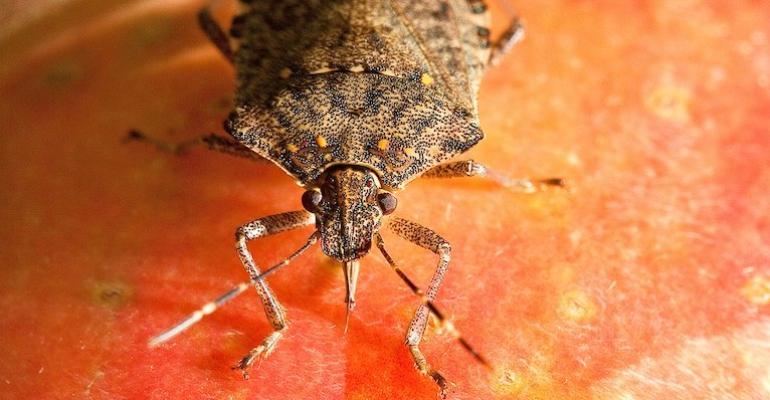The spread of invasive species via the containerised supply chains is becoming increasingly recognised as a major concern by governments and as Seatrade Maritime News reports Australia and NZ, which have strong bio-security concerns, already have seasonal measures in place to combat the importation of the brown marmorated stink bug.
Given the global concerns there are ongoing discussions between shipping lines, shippers and government representatives and other supply chain stakeholders to introduce measures that will mitigate the chances of costly infestations.
Any new measures are likely to have some slowing effect on the movement of freight through supply chains and will add to costs.
A specialist conference held in London last year, with a follow-up meeting in Brisbane in July this year, saw the Sea Containers Task Force, organised by the International Plant Protection Convention (IPPC) an arm of the UN’s Food and Agriculture Organization, look at possible measures to prevent the spread of invasive species on transport containers.
Ahead of last year’s London conference IPPC secretary Dr. Osama El-Lissy said, “Invasive pests remain the main drivers of biodiversity loss. As the world becomes more globalised and interconnected, the increase in the movement of people and goods has been associated with the rise of the introduction and spread of plant pests across borders.”
According to El-Lissy every year as much as 40% of global crops, valued at around $220 billion, are lost due to invasive pests.
This year the Task Force saw the Global Shipper’s Forum (GSF) chair Paul Zalai and Lars Kjaer of the World Shipping Council (WSC) tender proposals that will help container supply chain stakeholders to tackle the problem of invasive pests.
Steel or composite floored containers
One of the longer-term proposals, is to transition from wooden floored containers to steel and composite floors.
GSF director James Hookham points out, “Wooden floored containers can harbour pests such as khapra beetles, whose larvae can lie dormant in wood for long periods of time.”
Such a move to steel and composite flooring in containers will take time so in the interim to stem the flow of invasive species the Brisbane Sea Container discussions centred around, custodial responsibility and other measures that can be used to cut the levels of hitchhiking bugs.
Anna Larsson, a spokeswoman for WSC, told Seatrade Maritime News, “The design of the containers, such as materials used, especially for flooring, and design details are an important aspect in preventing pest transfer.”
Indications show that newer container floor options like steel or floors with no cracks and crevices are less susceptible to enabling the spread of pests. More testing work needs to be done on this issue said Larsson.
Cleaning containers
Another issue raised in Brisbane has been custodial responsibility, which requires each stakeholder in the supply chain to inspect and clean the container before passing the box on to the next stakeholder.
Larsson said, “WSC has long been advocating the importance of all parties in the supply chain taking custodial responsibility for their part of the chain. Together with targeted inspection and treatment schemes for containers and cargoes this is an effective and efficient way of reducing the risk of hitchhiker pests.”
Additionally, there was advice that loading should take place with regard to minimising the attraction of bugs to the container, so not under lights in the dark, and on hard standings rather than mud or grass.
Moreover, Zalai, proposed that shipping lines publish data on each container online, which can be accessed via a search using the boxes’ serial number.
That will allow shippers to look at the container’s history when the shipping line offers it as an empty box to ship cargo to its client. Data such as the recent history of where the box has travelled, what cargo was carried and when it was last cleaned and how, would assist shippers in deciding whether the container posed a higher or lower risk of contamination of their freight.
Shipping lines are on board with this view, said Larsson. “During the recent IPPC workshop, Australia again raised the idea of data on historic container movements, to assist in the risk assessment for targeting of inspections. WSC is very willing to work with regulators and others in developing such a considered system for historic container movements that is accepted globally. We are now awaiting feedback from regulators on key critical elements such as how long the period to be covered should be and what data elements they would like to include. “
The WSC concluded: “We are happy to be working together with GSF on the important topic of pest prevention. Shippers and carriers coming together around the importance of each party in the supply chain taking custodial responsibility for their containers and cargoes being pest free is great progress in reducing the risk of pest transfers.”
Details of the Brisbane proposals can be found here: GSF Proposals.
Copyright © 2024. All rights reserved. Seatrade, a trading name of Informa Markets (UK) Limited.
Add Seatrade Maritime News to your Google News feed.  |

